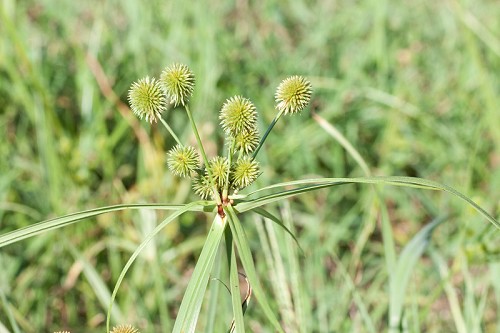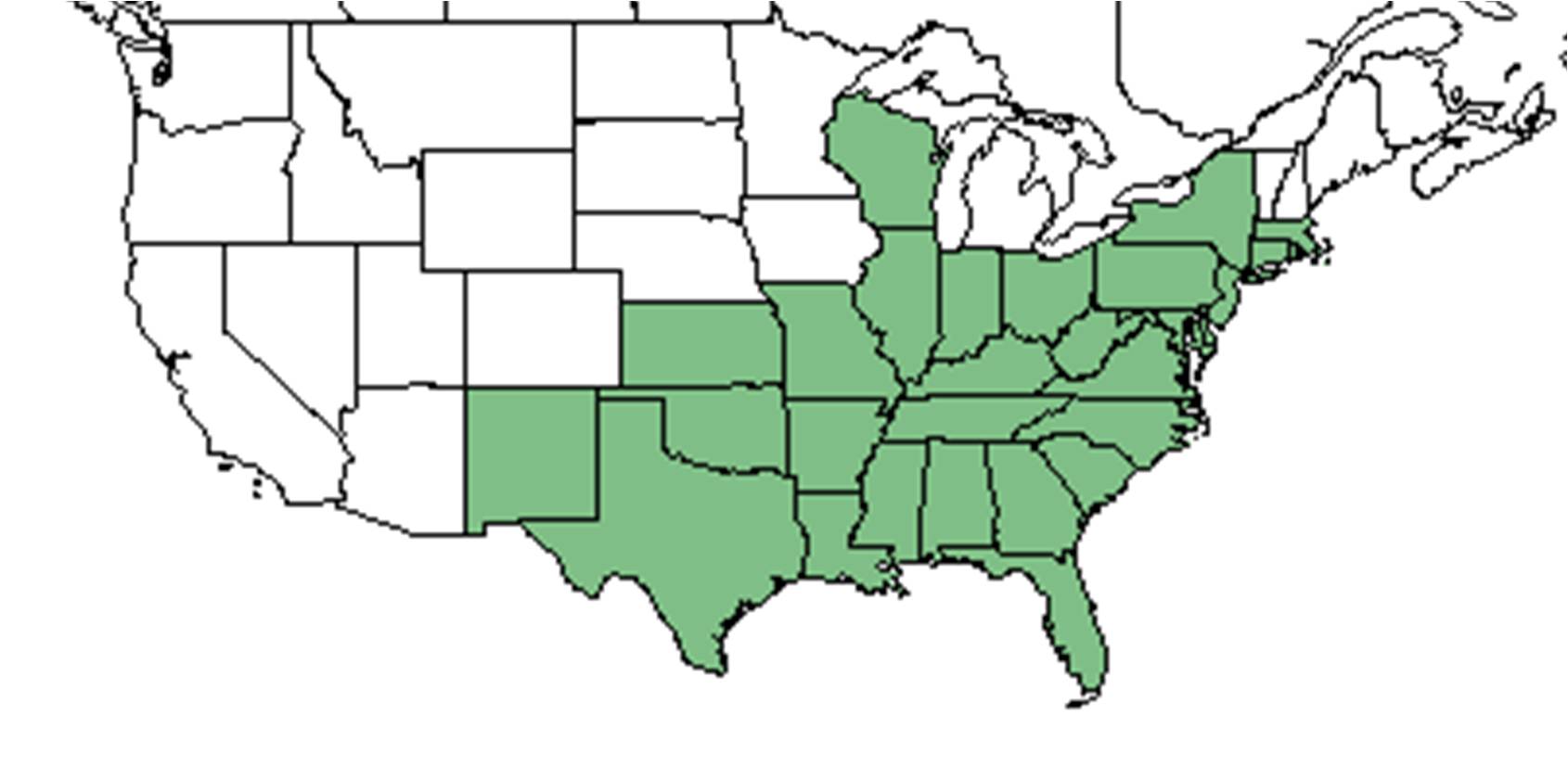Difference between revisions of "Cyperus echinatus"
Krobertson (talk | contribs) (→Ecology) |
HaleighJoM (talk | contribs) (→Ecology) |
||
| (14 intermediate revisions by 7 users not shown) | |||
| Line 1: | Line 1: | ||
| − | |||
{{italic title}} | {{italic title}} | ||
<!-- Get the taxonomy information from the NRCS Plants database --> | <!-- Get the taxonomy information from the NRCS Plants database --> | ||
{{taxobox | {{taxobox | ||
| name = Cyperus echinatus | | name = Cyperus echinatus | ||
| − | | image = | + | | image = Cype_echi.jpg |
| − | | image_caption = | + | | image_caption = Photo by John R. Gwaltney, [http://www.southeasternflora.com/index.asp Southeastern Flora.com] |
| regnum = Plantae | | regnum = Plantae | ||
| divisio = Magnoliophyta - Flowering plants | | divisio = Magnoliophyta - Flowering plants | ||
| Line 18: | Line 17: | ||
| range_map_caption = Natural range of ''Cyperus echinatus'' from USDA NRCS [http://plants.usda.gov/core/profile?symbol=CYEC2 Plants Database]. | | range_map_caption = Natural range of ''Cyperus echinatus'' from USDA NRCS [http://plants.usda.gov/core/profile?symbol=CYEC2 Plants Database]. | ||
}} | }} | ||
| + | Common names: Globe flatsedge; Teasel sedge | ||
==Taxonomic notes== | ==Taxonomic notes== | ||
| − | Synonyms: ''Cyperus ovularis'' ( | + | Synonyms: ''Cyperus ovularis'' (Michaux) Torrey; ''C. ovularis'' var. ''ovularis''; ''C. ovularis'' var. ''sphaericus'' Böckler.<ref name="weakley">Weakley, A.S. 2015. Flora of the southern and mid-atlantic states. Working Draft of 21 May 2015. University of North Carolina at Chapel Hill, Chapel Hill, North Carolina.</ref> |
| + | |||
| + | Varieties: none.<ref name="weakley">Weakley, A.S. 2015. Flora of the southern and mid-atlantic states. Working Draft of 21 May 2015. University of North Carolina at Chapel Hill, Chapel Hill, North Carolina.</ref> | ||
| + | |||
==Description== | ==Description== | ||
<!-- Basic life history facts such as annual/perrenial, monoecious/dioecious, root morphology, seed type, etc. --> | <!-- Basic life history facts such as annual/perrenial, monoecious/dioecious, root morphology, seed type, etc. --> | ||
A description of ''Cyperus echinatus'' is provided in [http://efloras.org/florataxon.aspx?flora_id=1&taxon_id=242357651 The Flora of North America]. | A description of ''Cyperus echinatus'' is provided in [http://efloras.org/florataxon.aspx?flora_id=1&taxon_id=242357651 The Flora of North America]. | ||
| − | + | ==Distribution== | |
| − | + | ==Ecology== | |
| − | + | ===Habitat=== <!--Natural Community, human disturbed habitats, topography, hydrology, soils, light, fire regime requirements for removal of competition, etc.--> | |
| − | + | ''C. echinatus'' has been found in areas with loamy sand, wet woodlands, the edges of tidal marshes, and old growth longleaf pine forests.<ref name="FSU"> Florida State University Herbarium Database. URL: http://herbarium.bio.fsu.edu. Last accessed: May 2021. Collectors: Loran C. Anderson, Keith A. Bradley, and Robert K. Godfrey. States and counties: Florida: Wakulla, Georgia: Dougherty and Thomasville, and South Carolina: Clarendon.</ref> It is also found in disturbed areas including along clay roadside banks and along roadsides between waterfowl ponds.<ref name="FSU"/> | |
<!--===Phenology===--> <!--Timing off flowering, fruiting, seed dispersal, and environmental triggers. Cite PanFlora website if appropriate: http://www.gilnelson.com/PanFlora/ --> | <!--===Phenology===--> <!--Timing off flowering, fruiting, seed dispersal, and environmental triggers. Cite PanFlora website if appropriate: http://www.gilnelson.com/PanFlora/ --> | ||
<!--===Seed dispersal===--> | <!--===Seed dispersal===--> | ||
| Line 33: | Line 36: | ||
<!--===Fire ecology===--> <!--Fire tolerance, fire dependence, adaptive fire responses--> | <!--===Fire ecology===--> <!--Fire tolerance, fire dependence, adaptive fire responses--> | ||
<!--===Pollination===--> | <!--===Pollination===--> | ||
| − | <!--=== | + | <!--===Herbivory and toxicology===--> |
<!--===Diseases and parasites===--> | <!--===Diseases and parasites===--> | ||
| − | ==Conservation and | + | ==Conservation, cultivation, and restoration== |
| − | == | + | |
| + | ==Cultural use== | ||
==Photo Gallery== | ==Photo Gallery== | ||
<gallery widths=180px> | <gallery widths=180px> | ||
</gallery> | </gallery> | ||
==References and notes== | ==References and notes== | ||
Latest revision as of 13:41, 22 June 2022
| Cyperus echinatus | |
|---|---|

| |
| Photo by John R. Gwaltney, Southeastern Flora.com | |
| Scientific classification | |
| Kingdom: | Plantae |
| Division: | Magnoliophyta - Flowering plants |
| Class: | Liliopsida |
| Order: | Cyperales |
| Family: | Cyperaceae |
| Genus: | Cyperus |
| Species: | C. echinatus |
| Binomial name | |
| Cyperus echinatus (L.) Alph. Wood | |

| |
| Natural range of Cyperus echinatus from USDA NRCS Plants Database. | |
Common names: Globe flatsedge; Teasel sedge
Contents
Taxonomic notes
Synonyms: Cyperus ovularis (Michaux) Torrey; C. ovularis var. ovularis; C. ovularis var. sphaericus Böckler.[1]
Varieties: none.[1]
Description
A description of Cyperus echinatus is provided in The Flora of North America.
Distribution
Ecology
Habitat
C. echinatus has been found in areas with loamy sand, wet woodlands, the edges of tidal marshes, and old growth longleaf pine forests.[2] It is also found in disturbed areas including along clay roadside banks and along roadsides between waterfowl ponds.[2]
Conservation, cultivation, and restoration
Cultural use
Photo Gallery
References and notes
- ↑ 1.0 1.1 Weakley, A.S. 2015. Flora of the southern and mid-atlantic states. Working Draft of 21 May 2015. University of North Carolina at Chapel Hill, Chapel Hill, North Carolina.
- ↑ 2.0 2.1 Florida State University Herbarium Database. URL: http://herbarium.bio.fsu.edu. Last accessed: May 2021. Collectors: Loran C. Anderson, Keith A. Bradley, and Robert K. Godfrey. States and counties: Florida: Wakulla, Georgia: Dougherty and Thomasville, and South Carolina: Clarendon.